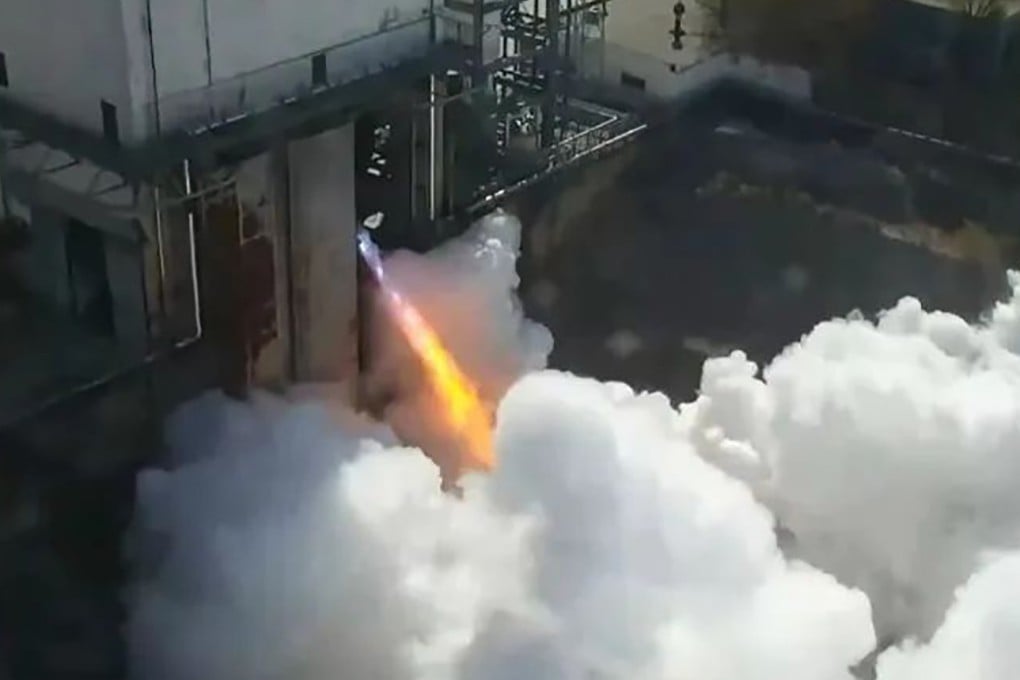Powerful Chinese space rocket engine passes ‘milestone’ test
- Aerospace developer says the world-leading YF-130 outperformed China’s YF-100 workhorse by four times
- The liquid oxygen-kerosene machine will be a major component in realising the country’s lunar and Mars ambitions

The whole-system test of the 500 tonne-thrust, dual-nozzle liquid oxygen-kerosene engine – the most powerful of its kind in the world – was conducted on Saturday by the China Aerospace Science and Technology Corporation’s No 6 Institute, the main developer of liquid fuel rocket engines in the country.
The new engine’s 500 tonne maximum thrust also surpasses Russia’s RD-180, the most powerful liquid fuel rocket engine in use now.
The engine, which took a decade to develop, “innovatively adopted a fully digital design and management model, and scored a series of key technology breakthroughs”, the developer said.

The YF-130 is expected to be used to power the Long March 9, a super heavy-lift rocket China is developing to send astronauts to the moon by 2030 and set up a lunar research station with Russia and other potential international collaborators around 2035.